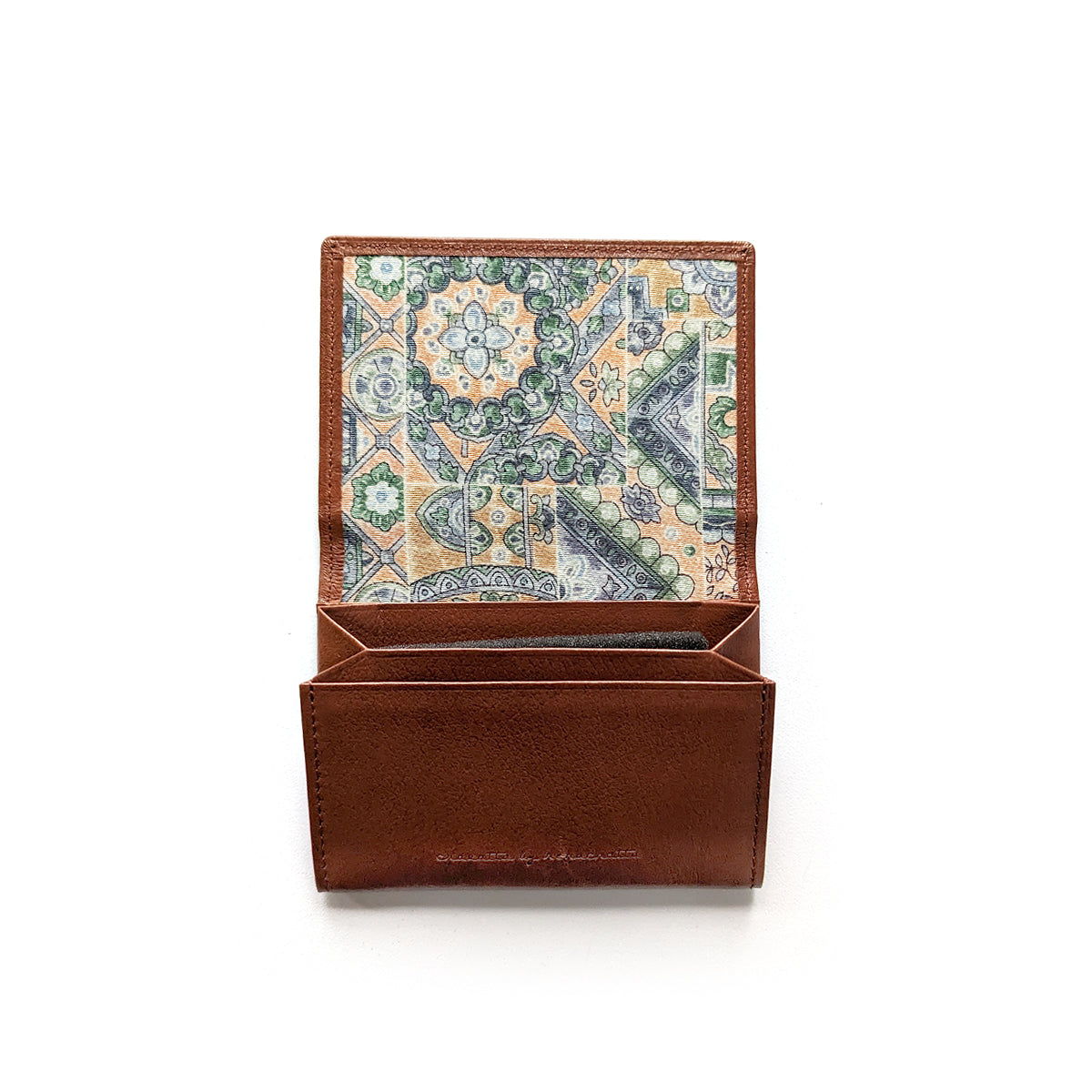
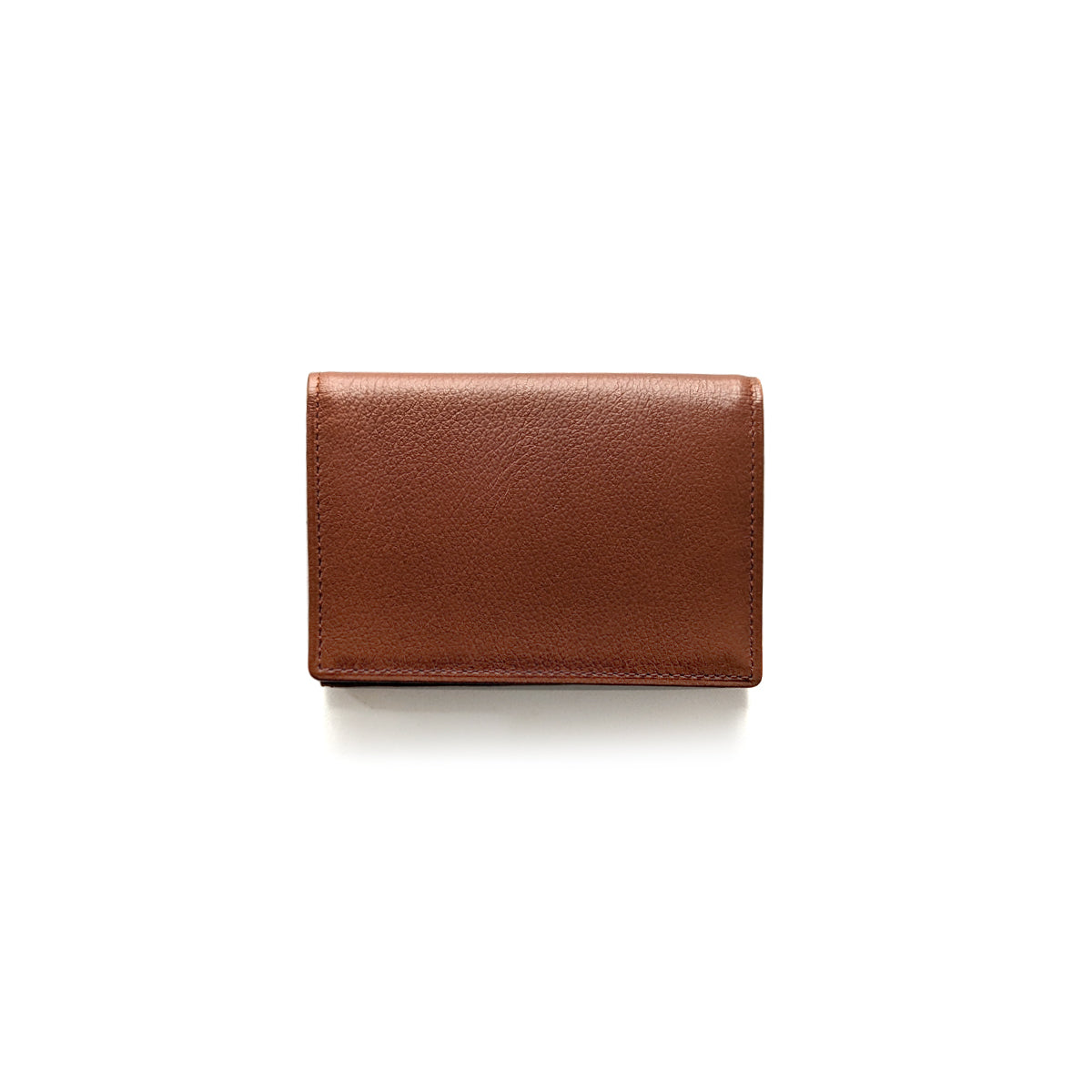
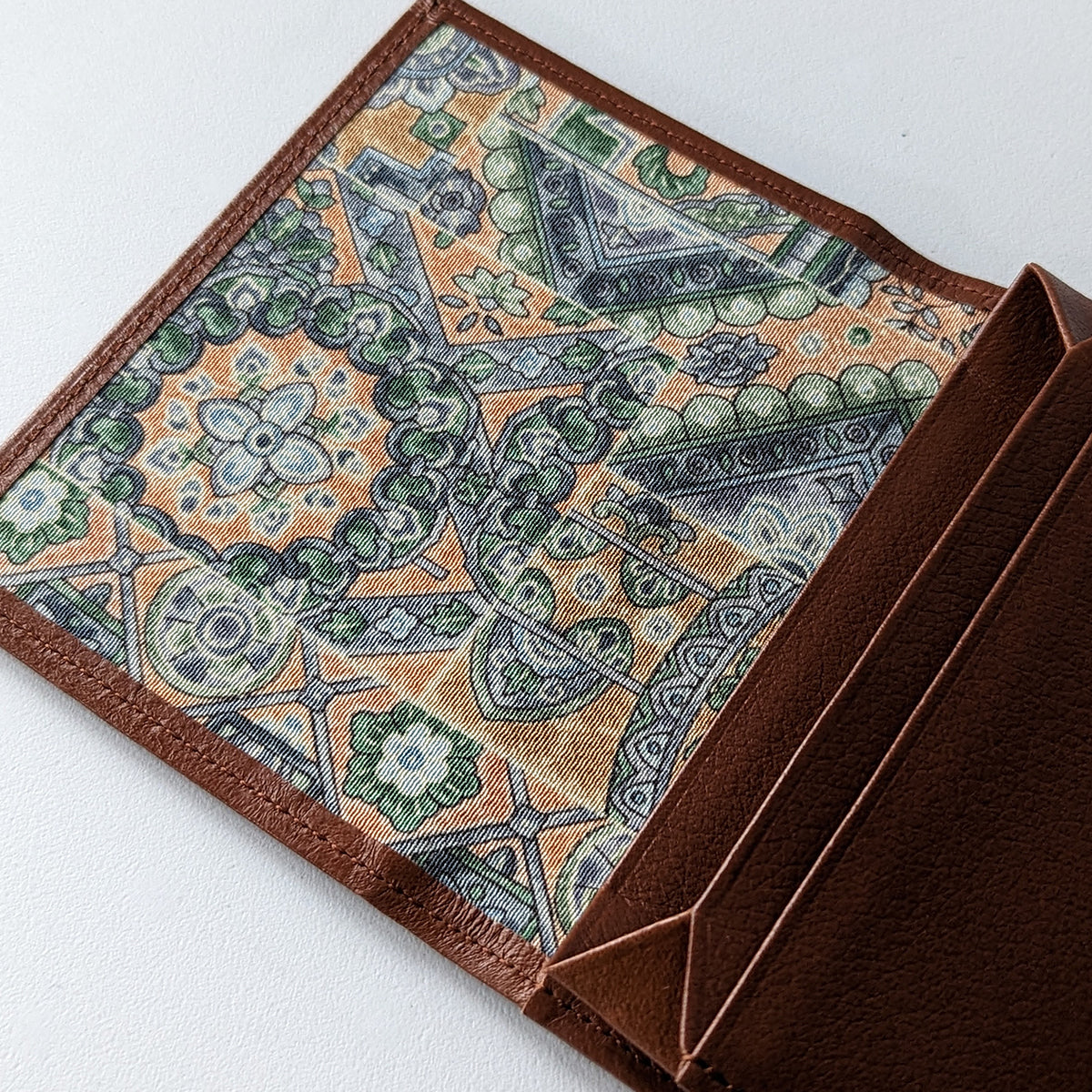
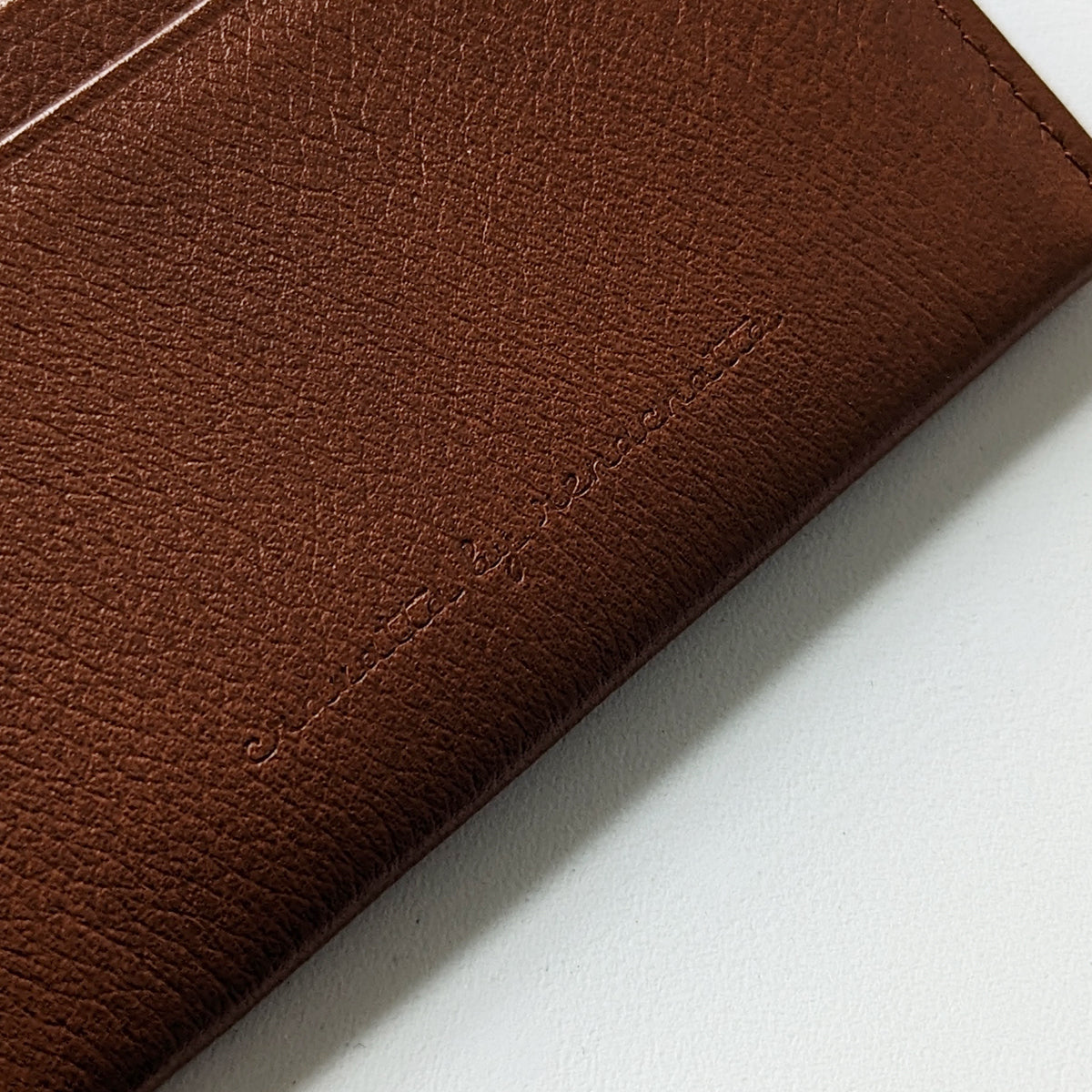
Card Case - Brown
This business card holder is carefully handcrafted by skilled craftsmen in Japan using dead stock leather that has been sleeping in a Japanese tannery factory. The interior is lined with a unique kimono fabric. The gorgeous kimono fabric stands out because it is not visible from the outside.
Not only the material, but also the tailoring and function are carefully made.
- Fukin Machi
"Fukin gusset" is a traditional technique unique to Japan that is not seen overseas, and although it has a gusset, it has almost no thickness , and its greatest feature is its excellent usability . Despite its thinness, it can hold more than 20 thick business cards.

Common gussets are valley folds, but fukin gussets are mountain folds. Since the cards inside will not get caught, you can take them out smoothly.
In order to create a wind gusset, the leather must be precisely plowed (a process in which the leather is made thinner where the pieces of leather are pasted together) and cut, which requires advanced technology and time. Therefore, in today's mainstream of mass production and mass consumption, there are only a few workshops that have passed down the techniques .- Kikuyose
"Kikuyose" is used to process the edges of the leather. This technique involves folding fine and even pleats into the excess portion of the leather that meets the edges at right angles . It is called Kikuyose because the radial folds look like chrysanthemum flowers.
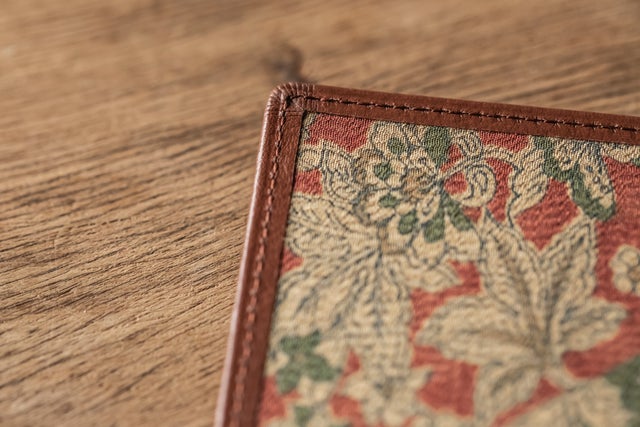
It is said that you can see the skill of the craftsman by looking at the kikuyose. In this product, the chrysanthemum part is also finely and carefully carved and finished beautifully.
- Nene pull
Also, in the finishing process, we do "Nenbiki" . By drawing a line with a heat-dissipating trowel a few millimeters from the tip of the edge, the adhesiveness of the edge is enhanced, and at the same time, the sharp line running right next to the stitching gives a sharper look to the leather item.

It is a business card case with beautiful and functional Japanese handicrafts in a small item.
=======
Material: Cowhide Size : Length 7.7 x Width 10.8 x Thickness 1.0cm Height 16.0cm when opened
Specifications : Inside main pocket x1, sub pocket x2, outside sub pocket x1
Country of Origin: Japan
■Due to monitor settings, the actual color may differ from the published photo.
■ We generally do not accept returns or exchanges unless the product is defective. For details, please see the description based on the Specified Commercial Transactions Law .
Choose options





